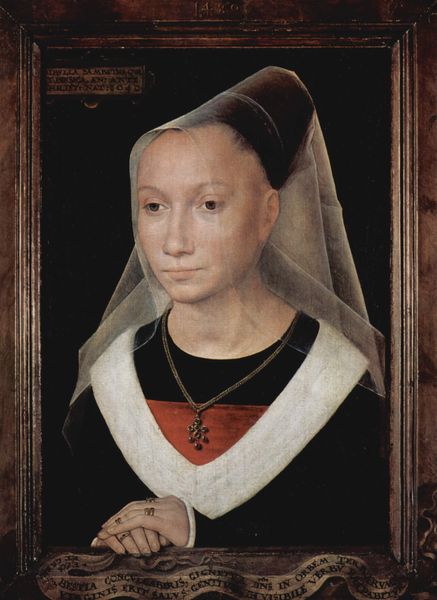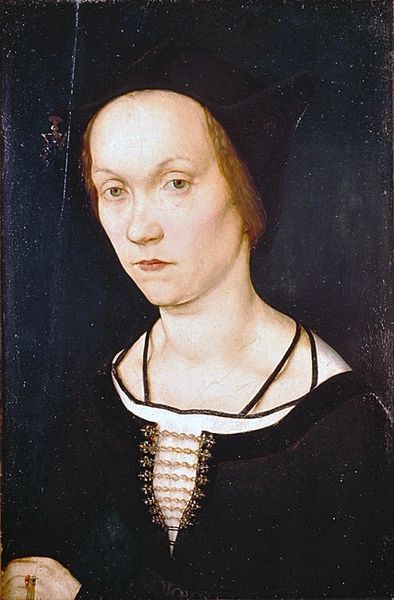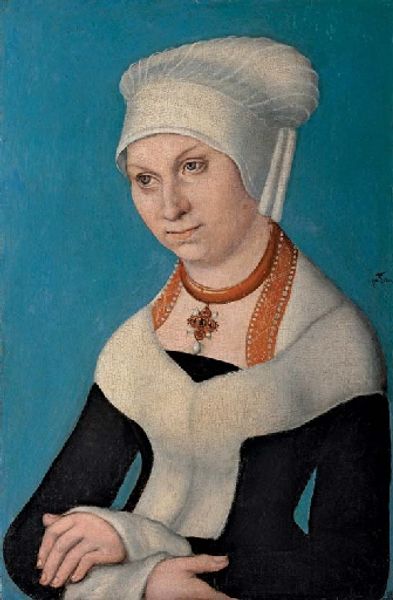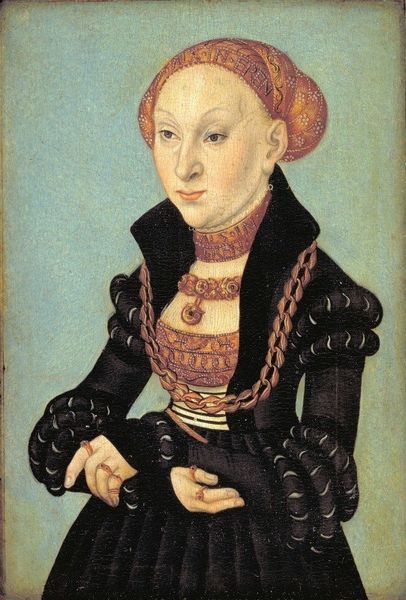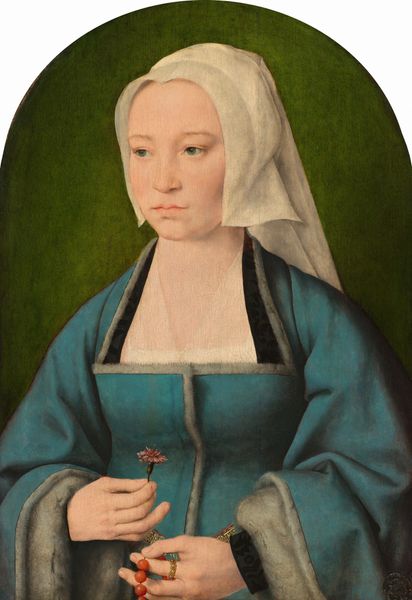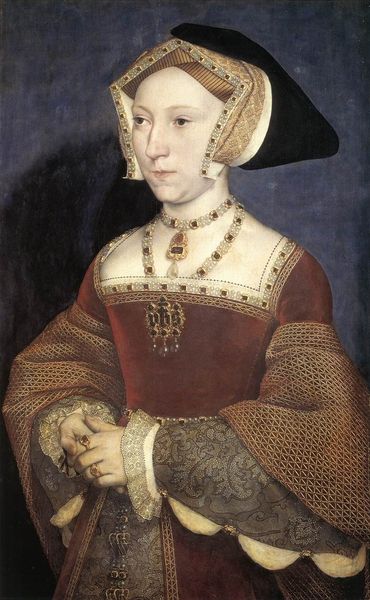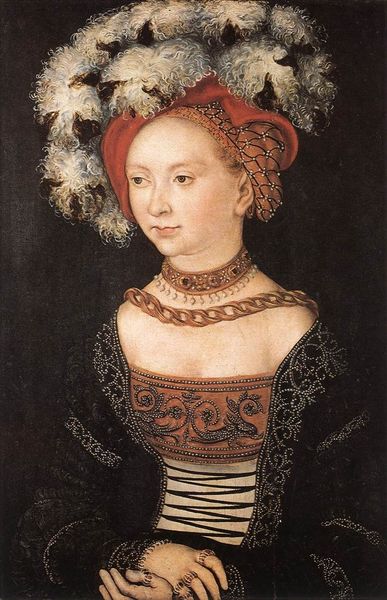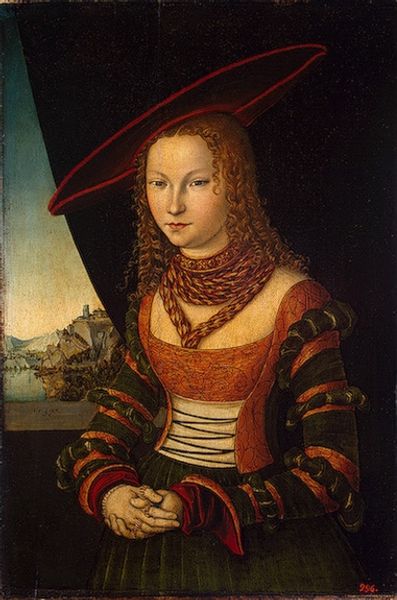
oil-paint
#
portrait
#
medieval
#
oil-paint
#
oil painting
#
northern-renaissance
#
early-renaissance
#
portrait art
Dimensions: 43 x 18.5 cm
Copyright: Public domain
Editor: Here we have Hans Memling’s "Portrait of a Young Woman," painted around 1480. The artist used oil on wood to capture the subject in stunning detail. What strikes me most is the subject’s serene, almost ethereal quality against the detailed background. What's your take? Curator: Well, looking at it from a historical lens, these portraits weren’t just decorative; they were powerful tools of social communication. This was a time of rising merchant power in Bruges. How do you think her image projects a specific societal standing? Editor: I guess the exquisite clothing and jewelry show wealth and status, right? It also shows she belonged to the high class of that time. Curator: Exactly. But it's more than just wealth; it's about legitimacy and constructing an identity. Her composed demeanor and the setting within the domestic yet somewhat public sphere of a window position her family respectably within Bruges’ social fabric. The flower adds an interesting touch. Do you know what kind of flower it is and what that might signify? Editor: I am unsure. I don't know exactly what kind it is but, with its rich red hue, perhaps a symbol of love, beauty or power? Curator: It’s thought to be a carnation, symbolizing betrothal. These details constructed a narrative about the sitter for public consumption, influencing perceptions and solidifying her role within a stratified society. Notice that she gazes off to the side. Could that be an invitation of something beyond what's visibly shown in the canvas? Editor: That’s insightful! It's amazing how much these details tell us about the societal function of portraiture back then. I learned how art plays a significant role in creating public image. Curator: Precisely. Understanding these portraits requires more than just admiring their aesthetic qualities; it's about decoding the social language they spoke.
Comments
No comments
Be the first to comment and join the conversation on the ultimate creative platform.

